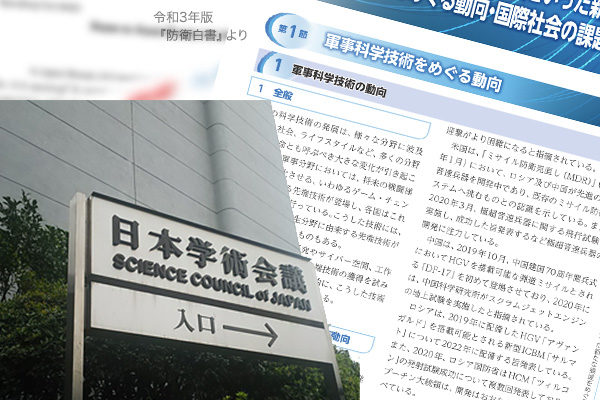While neighboring countries such as China and North Korea are accelerating the development of hypersonic missiles, Japan has cutting-edge technologies to develop a defense system against such missiles posing threats to Japan. But a military research ban by the Science Council of Japan (SCJ) has prevented Japan from doing so. Japan is now urgently required to fundamentally reform the SCJ.
Neighboring countries developing hypersonic weapons
Hypersonic missiles fly more than five times the speed of sound and navigate lower than ordinary ballistic missiles. Unlike ballistic missiles that fly parabolic trajectories, hypersonic missiles can quickly change their trajectories while flying and are seen as difficult to intercept. China test-fired a hypersonic weapon from an Earth orbit in August, as reported by a British newspaper. On September 28, North Korea test-fired a Hwasong-8 hypersonic missile. Japan has no means to intercept these missiles.
Threatened by numerous weapons of mass destruction including ballistic and hypersonic missiles, Japan must develop various defense systems. Hypersonic jet engines called ramjet or scramjet are required to neutralize enemy ground bases with hypersonic cruise missiles or intercept hypersonic missiles while using artificial intelligence (AI) to anticipate their irregular trajectories. Japanese national universities’ engineering faculties, graduate schools of engineering and laboratories belonging to them are rich with excellent human resources in fluid engineering, aerospace engineering, electronics, radio frequency engineering, nuclear power engineering and information engineering for AI and machine learning, who are studying such cutting-edge technologies.
Japan could effectively use its cutting-edge technologies and brains that support them to destroy enemy nuclear warheads with light-speed laser cannons and accelerator-driven system (ADS) neutron beam cannons, as well as rail guns that use superconductive linear accelerators to fire bullets like machine guns at plasma sonic speeds. Cutting-edge technologies can also be used to jam enemy missile control. Universities are urgently required to foster young researchers, overhaul research facilities and reform personnel systems such as five-year tenure.
Defense research to protect people’s lives and livelihood
However, the SCJ’s statement banning “military security research” on March 24, 2017, has prevented such technologies from being used for protecting people’s lives and livelihood. A SCJ president had once argued that defense research to protect Japan would be necessary. But members of a group called “Japanese Coalition against Military Research in Academia” (led by co-chief organizer Satoru Ikeuchi, professor emeritus at Nagoya University), supported by the “Article 9 Association of Scientists” and other pro-Constitutions groups, barged into a general SCJ meeting to force the ban on research that could be used for defense and other military purposes. This led multiple universities to cancel research projects sponsored by the Defense Ministry’s Acquisition, Technology & Logistics Agency.
The previous Yoshihide Suga administration offered to subject the SCJ to administrative reform as vowed by then administrative reform minister Taro Kono, but it lost its centripetal force in the closing days of the administration, leaving the reform up in the air. I hope that a new administration after the October 31 House of Representatives general election would give top priority to a thorough SCJ reform and the enhancement of advanced defense capabilities to protect the people.
Tadashi Narabayashi is professor emeritus at the Hokkaido University and a director at the Japan Institute for National Fundamentals.


